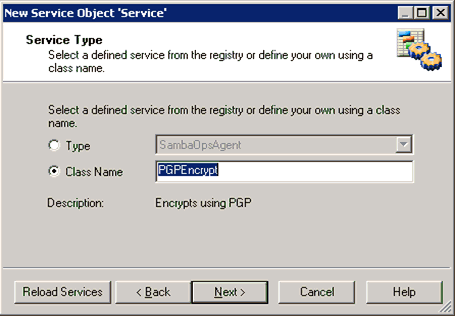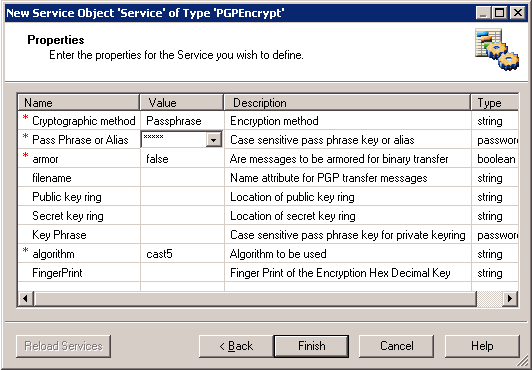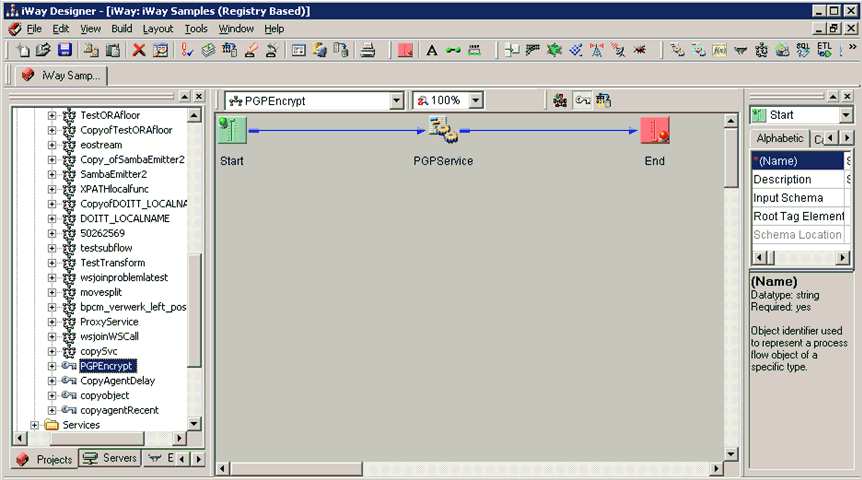To configure the PGPEncrypt service:
-
Using iWay Designer, drag and drop the Service object icon from
the toolbar to the workspace.
The Service Name and Description dialog box opens.
- In the Name field, type a new name for this Service object, and leave the default value (Service object) in the Description field.
-
Click Next.
The Service Type dialog box opens.

- Select Class Name and enter PGPEncrypt.
-
Click Next.
The Properties dialog box opens, as shown in the following image.

-
Provide the appropriate values for the properties as shown
in this example.
If Passphrase is specified for the Cryptographic method property, enter the pass phrase, otherwise enter the alias for the key pair method.
-
Click Finish.
The new Service object appears in the workspace.
You can now construct a process flow for the PGPEncrypt Service object with a Start and an End edge.

Since the file being used is encrypted before any action is performed, the file must be decrypted. In this example, test the process flow with a channel and write the encrypted output to a directory.
- Validate the process flow and publish it to the Registry for use in channel configuration.
- Using the iWay Service Manager Administration Console, add the process flow to a new route (for example, pgpencryptRt).
- Construct a new channel (for example, PGPEncryptSvc).
- Define an inlet for the channel, which consists of a File listener to pick up the encrypted file.
- Add the defined route (for example, pgpencryptRt) to the channel.
- Define a default outlet for the channel.
- Build, deploy, and start the channel.
- Input a file (for example, hello.xml) to be encrypted by the PGPEncryptSvc channel.
- Pick up the encrypted file at the default outlet of the PGPEncryptSvc channel.
-
Input the encrypted file to be picked up by the PGPReceiver
channel, which was configured earlier in Testing Document Encryption and Decryption.
The file obtained at the default outlet of the PGPReceiver channel should be the same as the original hello.xml file before encryption.